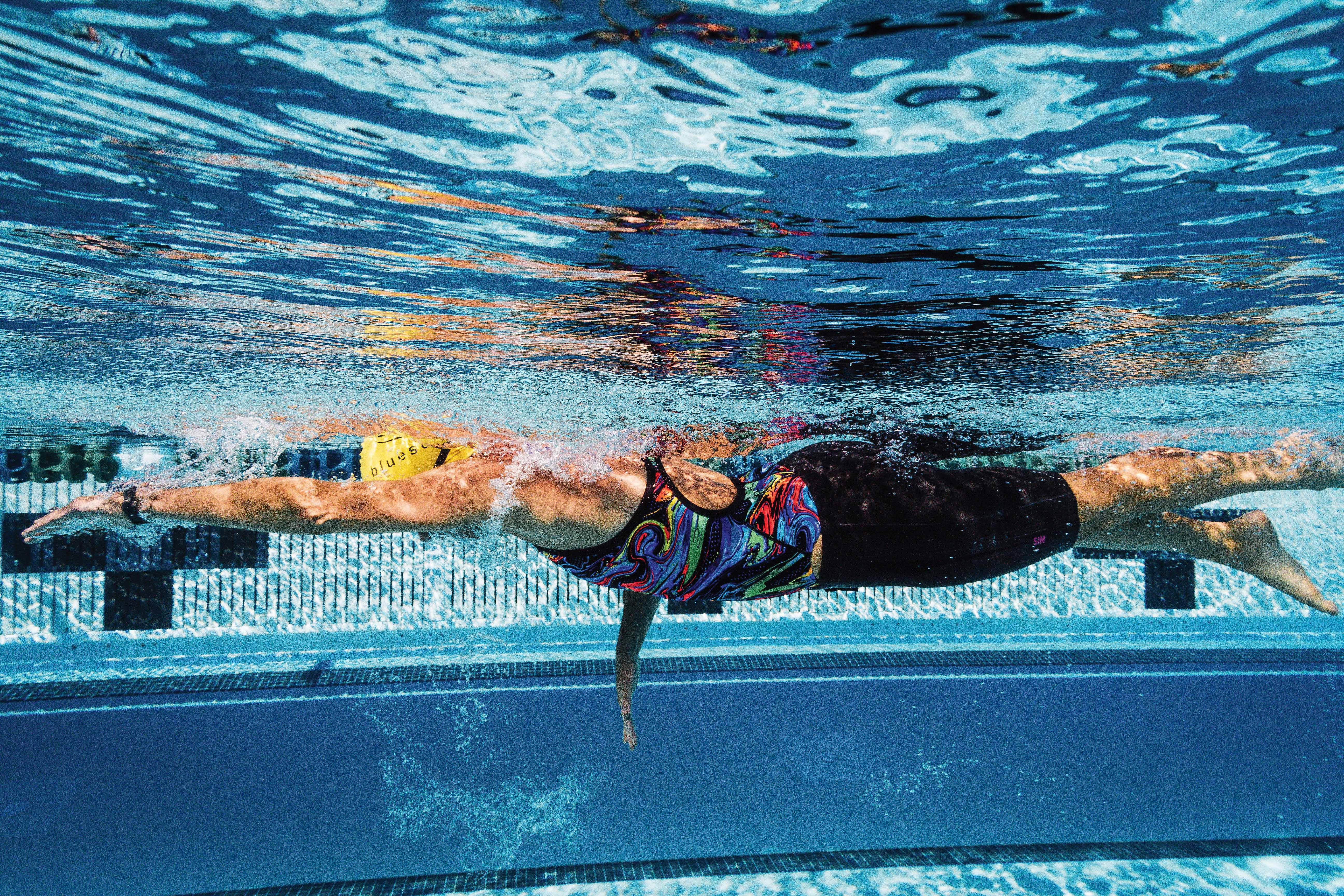How To Train With Neoprene Swim Shorts

Photo: John David Becker
Make the best use of the trendy swim tool.
Neoprene swim shorts are the hottest training tool to hit the pool deck since the pull buoy and are exploding in popularity, especially among triathletes. Just two years ago, only a handful of brands made wetsuit shorts, but now nearly every major wetsuit brand has at least one model (ROKA has three) including Blueseventy, XTERRA, De Soto, Zone 3, TYR and Orca. Like a pull buoy, the buoyancy of the shorts lifts your hips up, which frees you up to find a better angle of attack during the pull phase of your stroke. The slicker fabric also reduces drag, but the primary speed advantage comes from the extra buoyancy.
“For triathletes who know they are only going to be racing in a wetsuit, wearing these shorts in training will more closely simulate the body position and stroke mechanics they will use on race day,” says former USA National Team coach and collegiate All-American swimmer Jeff Pearson of Boost Swimming. He views the shorts as beneficial when used in moderation, and wouldn’t recommend wearing them for more than 30 percent of your workout. “The biggest downside is that much of the benefit comes from putting a Band-Aid on poor technique, which should be addressed,” he says.
The other downside is that the shorts make swimming easier. Pearson prefers to make swimming harder for his athletes with the use of ankle straps and drag suits. Swimmers with solid form don’t save as much time while wearing the shorts compared to swimmers with poor form. For this reason, Pearson recommends comparing your times from time trials with the shorts on versus off, with the goal of shrinking the time gap because of improved technique.
RELATED – Review: Blueseventy Core Shorts
Workout
Since the purpose of the shorts is to simulate race conditions, it makes sense to incorporate speed into your workouts while wearing them. Here are three sets from Pearson that should be done at your Olympic- or half-iron-distance pace.
Set 1
500, rest 20 sec
400, rest 20 sec
300, rest 20 sec
200, rest 20 sec
100
Swim at race pace trying to maintain an even pace and the same number of strokes per lap as you work down the ladder.
Set 2
10 x 150, rest 10 sec in between
Set 3
400 time trial
Do once every 3–5 weeks and alternate between wearing and not wearing the shorts to measure the difference. Try to bridge that gap over time.